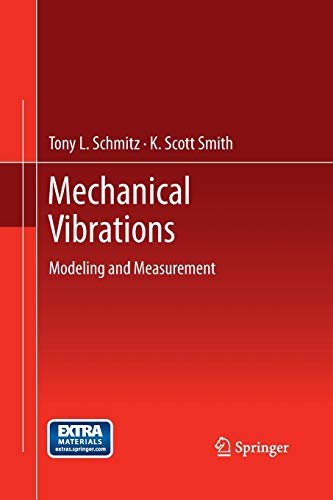The measurement bandwidth was increased so that the first three modes were captured. Again, the direct, (X_{1}
Question:
The measurement bandwidth was increased so that the first three modes were captured. Again, the direct, \(X_{1} / F_{1}\), and cross FRFs, \(X_{2} / F_{1}\) through \(X_{5} / F_{1}\), were measured. The imaginary part of the direct FRF for the entire bandwidth is shown in Fig. P6.6a. The three natural frequencies are 200, 550, and 1,250 Hz.
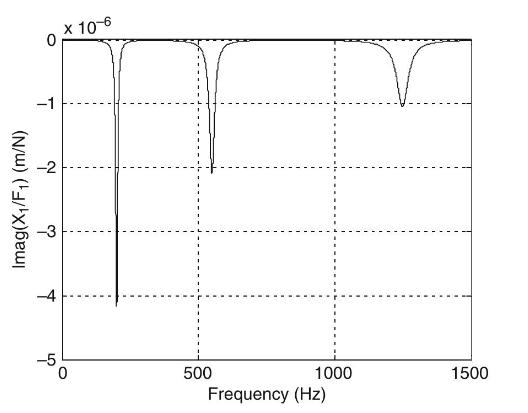
Fig. P6.6a Direct FRF \(X_{1} / F_{1}\).
Use Figs. P6.6b through P6.6f to identify the mode shape that corresponds to the \(1,250 \mathrm{~Hz}\) natural frequency. Plot your results using the same approach described.

Fig. P6.6b Direct \(\mathrm{FRF} X_{1} / F_{1}\) (mode 3 only).
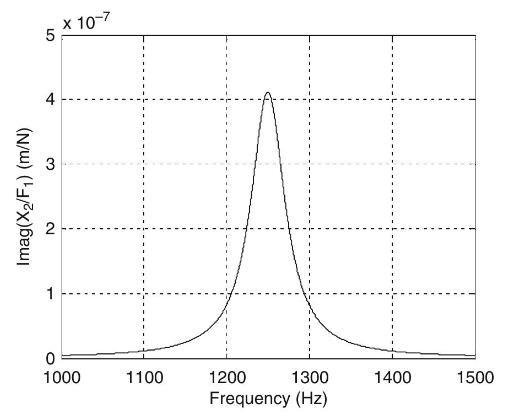
Fig. P6.6c Cross FRF \(X_{2} / F_{1}\).
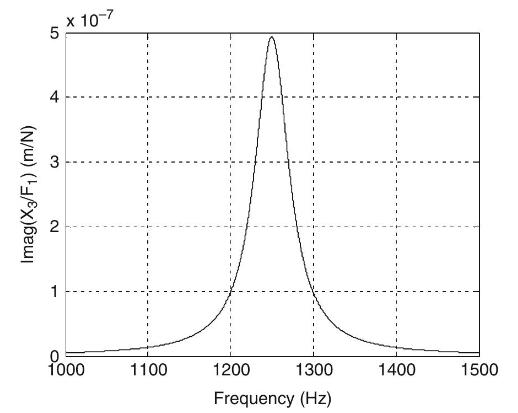
Fig. P6.6d Cross FRF \(X_{3} / F_{1}\).
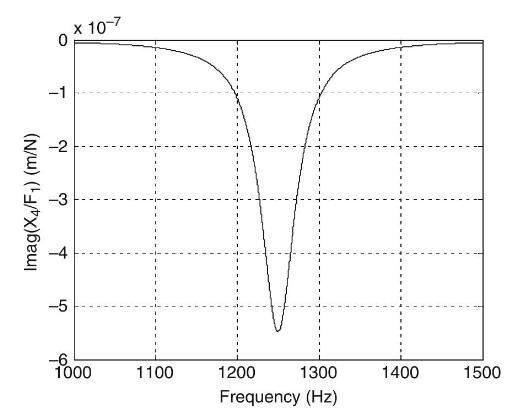
Fig. P6.6e Cross FRF \(X_{4} / F_{1}\).
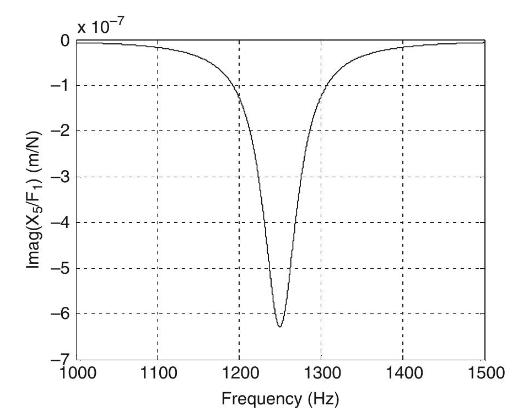
Fig. P6.6f Cross FRF \(X_{5} / F_{1}\).
Step by Step Answer:

Mechanical Vibrations Modeling And Measurement
ISBN: 119669
1st Edition
Authors: Tony L. Schmitz , K. Scott Smith



